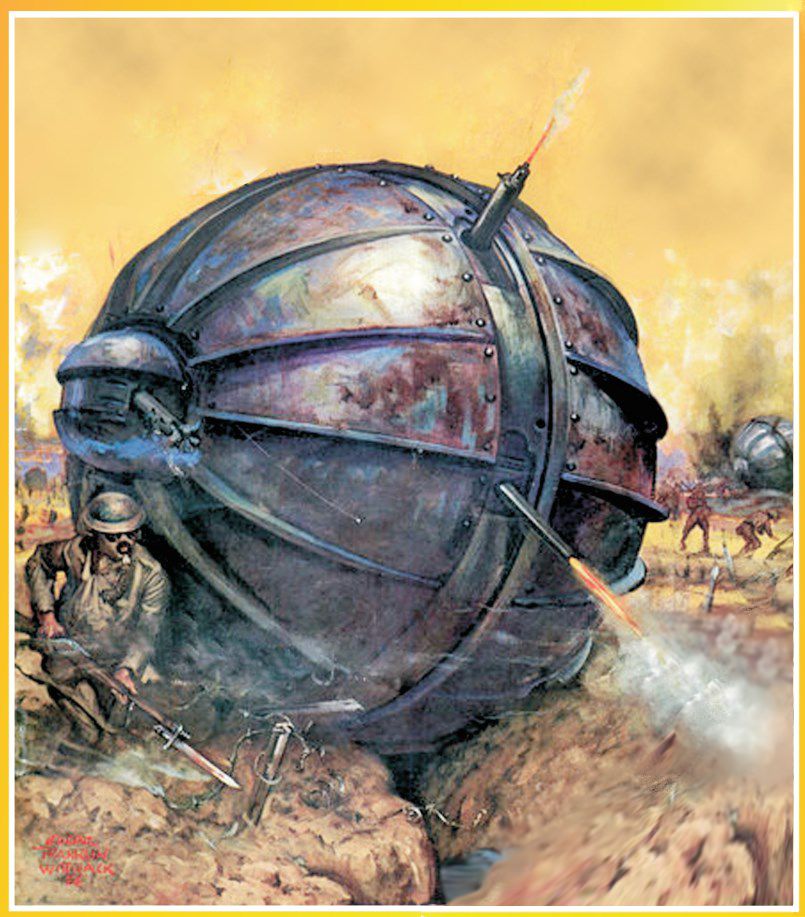
A storm was brewing. 1936 was a year of four-year plans, rearmament, and hasty statements of neutrality. And if the Tumbleweed Tank is anything to go by, it was also a year for bizarre weapons-invention.
Texan inventor A J Richardson’s goal was to further
mechanise the future of warfare after the bloody stalemate of the First World
War’s ‘war of attrition’. What if, instead of blindly launching mortar-bombs
and men in the direction of the enemy’s trench, one could send heavily armoured,
motorised bunkers across No Man’s Land? Then, from inside enemy terrain, the
Tumbleweed Tank could lay down suppressive fire as the infantry advanced.
Richardson was told to draw up prototype plans for his idea,
and in the July 1936 edition of Popular Mechanics, a cutaway diagram of the
tank was published along with an article discussing the future of war machines.
Things were looking up. At the outbreak of war, looking increasingly likely,
America would be one step ahead of the game.
The diagram clearly indicates how this deadly rolling tank
would work: a hollow, spherical, steel driving-cab is enclosed within two
rotating outer shells in the form of cup-shaped halves. Motordriven gears
rotate the two outer shells, which roll the tank along the ground. The speed of
each shell affects the steering of the vehicle, while the heavy driving motor
on the cab floor provides stability and prevents the tank from rolling
sideways.
The cab could be sealed against poison-gas attacks, and the
tank’s spherical shape (so Richardson claimed) would present the smallest
possible target for enemy shells; all but direct hits would glance harmlessly
off its curved sides.
But there was a problem: the men sealed inside this steel
bubble, frenziedly machinegunning everything in all directions, had no idea
what was going on outside. Richardson, it seemed, while painstakingly working
out the optimum way for his tank to move effectively across the battlefield,
had forgotten the men’s need to see where they were going and who they were
shooting.
Terrifying for its operators, terrifying for the enemy, and
terrifying for nearby friendly troops, the Tumbleweed Tank would have been an
unpredictable ball of destruction, firing blindly and without discrimination on
friend and foe alike. It is little wonder, then, that Richardson’s idea never
got past the design stage.